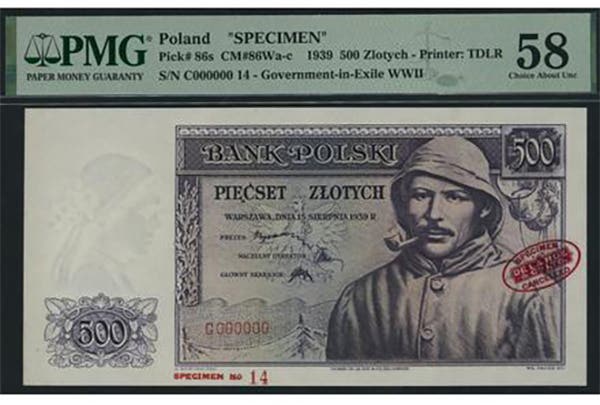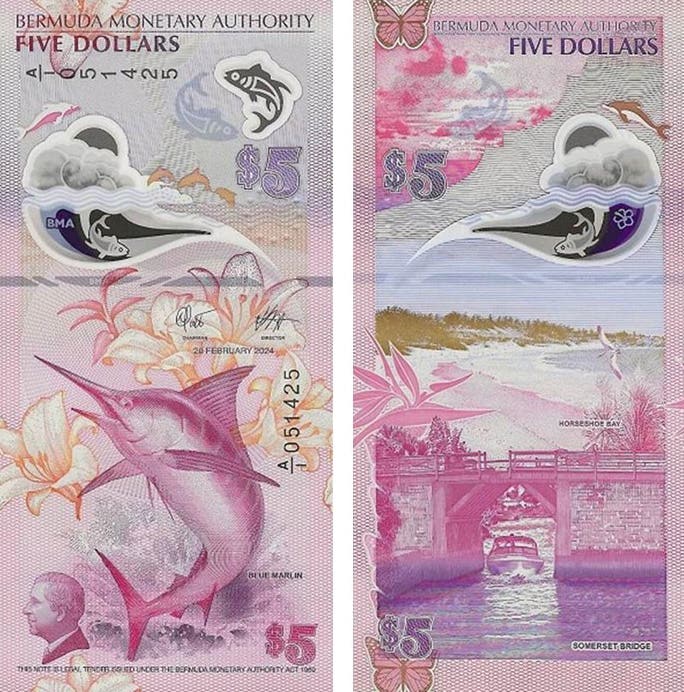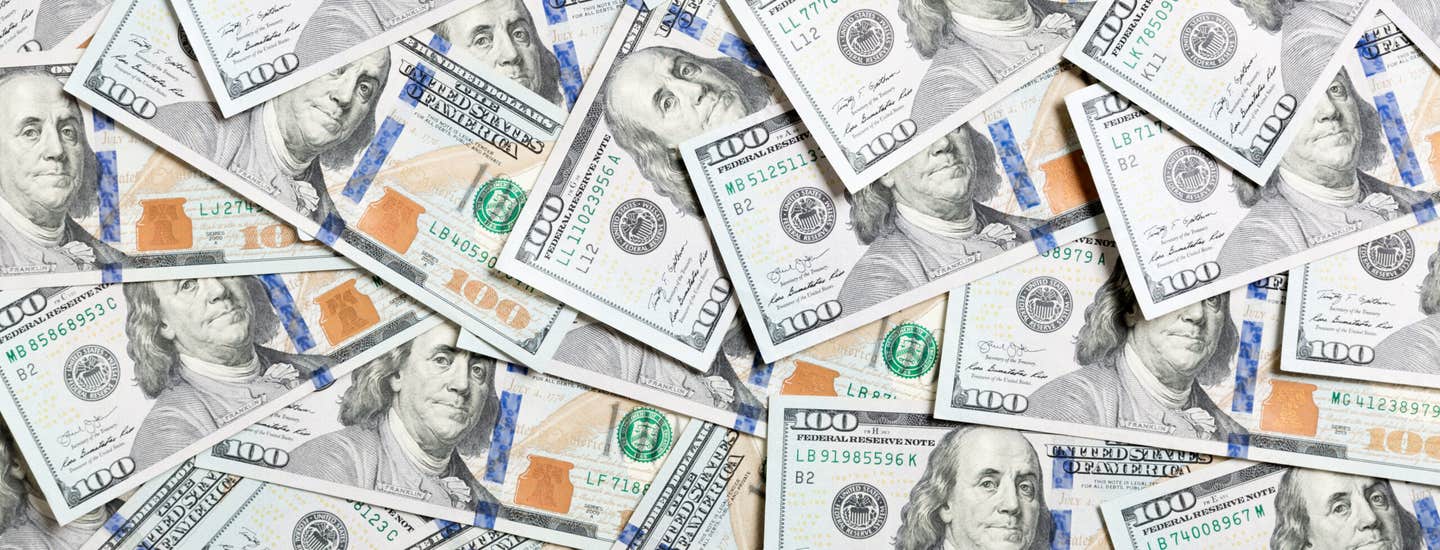Series of 1882 Date and Value Back 10-10-10-10 Plates
The Aldrich-Vreeland Emergency Currency Act in force between 1908 and 1915 led to the issuance of the date back national bank notes in both the Series of 1882 and 1902….
The Aldrich-Vreeland Emergency Currency Act in force between 1908 and 1915 led to the issuance of the date back national bank notes in both the Series of 1882 and 1902. However, when the act expired, the date back nationals continued to be printed. Existing and newly printed stocks of the date backs continued to be sent to the banks until they were exhausted.
The most interesting and probably most convoluted of the post-act printings involved the lightly used Series of 1882 10-10-10-10 plates. We’ll take a look at the changeover from those date back to value back printings.
The Aldrich-Vreeland Act was passed July 1, 1908 in order to provide a degree of elasticity into the national bank note money supply. Under its terms, bankers could deposit municipal bonds and certain forms of commercial paper to secure additional issuances of national bank notes if they had a need for a short-term boost to their circulations above their traditional bond-secured circulation.
One of the terms of the Aldrich-Vreeland Act was that national bank notes issued after its passage had to carry a security clause that acknowledged that the notes were backed in part by a lower class of paper than United States bonds. This gave rise to the “or other securities” clause on their faces. All banks got notes with the clause whether they went on to subscribe for emergency currency or not.
In addition, the Treasury officials also decided to change the backs of the notes to carry dates in order to further distinguish them. The Series of 1882 and 1902 date backs were the result because both series were current when the act went into effect.
The terms of the Aldrich-Vreeland Act expired on June 30, 1915. Treasury officials used the precedent of the introduction of the date back designs when the act went into effect to eliminate them when the act lapsed. The value back designs followed in the case of the Series of 1882 issuers. Also, the security clause on the faces of the notes reverted to earlier form without “or other securities.”
Unlike the abrupt startup of the date back issues in 1908, the phase-out of the date backs spanned almost eleven years. The drawn-out transition was driven by cost and waste avoidance. Specifically, it would have been costly and burdensome to change the security clauses on the many thousands of affected face plates, and it would have been wasteful to cancel the huge stocks of preprinted one-sided backs carrying dates used as feed stock at the Bureau of Engraving and Printing and the large inventory of unissued completed date back sheets held by the Comptroller of the Currency.
Treasury officials from the Secretary of the Treasury on down to the Director of the Bureau of Engraving and Printing knew the Aldrich-Vreeland Act was going to expire so they began serious deliberations on how to handle the transition beginning many months before it occurred. Their objective was to comply with existing laws, yet avoid unnecessary costs and waste.
Joseph E. Ralph, Director of the Bureau of Engraving and Printing, carefully documented the practical ramifications of the transition. On March 8, 1915, he wrote to Secretary of the Treasury William G. McAdoo to explain the situation as he perceived it. He was acutely familiar with the “or other securities” clause on the current date back notes because he presided over the crash program to alter some 9,000 face plates to carry the clause when the Aldrich-Vreeland Act was passed in 1908. He also pointed out that as of March 2, the Comptroller had on hand 15,236,911 unissued sheets of date backs with a face value of $643,339,060, at least two-thirds of which would still be in inventory on June 30th when the act expired. He argued for the continued use of the plates and continued issuance of the date back sheets after expiration.
“If these notes could be used and the present plates could be continued in use for printing currency required by the banks after June 30, there would be an immense saving to the Government for the reason that the alteration made in the plates in 1908 put them in such condition that it would be impracticable to make another alteration in the same part of the plate, and consequently, if the language on the notes should be changed, new plates would have to be made to replace all except such new plates as have been made since 1908 and which could be altered. The cost of making new plates that would be required and altering those that are in condition to permit alteration would be $316,871, and if there should remain on hand in the Comptroller’s Office on July 1, 15,000,000 sheets with the present language that could not be used and these notes should be cancelled, there would be an additional loss of $625,950, or a total loss of $942,821 if it should be decided that the language on the notes issued after July 1 should be changed to eliminate the words “or other securities.”
Secretary McAdoo was a decisive man of action so the next day he sent the following memo to Assistant Secretary of the Treasury William P. Malburn.
“Referring to the attached letter from Mr. Ralph, my judgment is that we ought to preserve the plates as they are and continue to issue the currency as it is. I will discuss this with you shortly. Meantime, please advise me if there are any legal reasons why the course I suggest should not be pursued.”
This all-important memo established the policy that would be followed. The boss had spoken so Malburn labored to develop justification to rationalize McAdoo’s directive. Malburn analyzed the law and the practical realities that Treasury faced. He sent Ralph a letter on March 12th that would allow the poor fellow to sleep well again. The emphasis is mine.
“It would be impossible, therefore, if the notes now on hand did not continue to be used, as well as the plates, to supply the demand for national bank notes after June 30, 1915. As the addition of the words “or other securities” cannot give the idea that the notes are better secured than they actually are, but the contrary, no one can be injured in any way by having those words on the notes. These words, therefore, may be disregarded as superfluous. This is contrary to the condition when the Act was adopted, as if the notes had not contained these words, they might have carried a misrepresentation on their face.”
Malburn then went on to issue the following directive.
“You are authorized to continue to use the plates you now have on hand after that date, but any new plates which are prepared should contain the words “This note is secured by United States bonds,” omitting the words “or other securities.” The dates 1902 and 1908 on the reverse side of these notes should be omitted in the future.”
Malburn followed up with a general Treasury memorandum dated April 20th that added specificity to his March 12 letter to Ralph.
“After June 30, 1915, the national bank notes will be printed from the same plates that have been used heretofore, and bearing the words “or other securities.” The present backs, the expense for preparing which is not reimbursable, will be used until they are worn out, and as worn out will be replaced by new backs on which the numbers “1902-1908” and “1882-1908” will be omitted, and, in the 1882 series plates will be replaced by the words “five dollars,” “ten dollars” etc., according to the denomination of the notes. The 1902 notes do not lend themselves as well to this change, and the denomination of the notes will be omitted.
As the plates for the faces of the notes are worn out, or as banks order new plates, and such new plates are prepared, the words “secured by United States bonds or other securities” will be changed to “secured by United States bonds deposited with the Treasurer of the.” With these exceptions the notes will be identical.”
The tenor of Malburn’s directives guided procedures at both the Bureau of Engraving and Printing and Comptroller of the Currency’s office. The big deal was that date back notes were going to continue to be printed and issued. They were, and the last of them were printed in February 1926, just a few months shy of eleven years after the act expired. Date backs in the Comptroller’s inventory continued to be sent to some banks right up to the end of the large note era in 1929.
The end of the date back printings from the “or other securities” face plates occurred abruptly for the various sheet combinations when the stocks of pre-printed backs with dates in the BEP inventory for those combinations ran out.
The Aldrich-Vreeland Act expired on June 30. The date back feed stocks for the heavily used Series of 1902 5-5-5-5 and 10-10-10-20 combinations were gone within seven days, followed by 1902 10-10-10-10s on July 19th. It took until the first and fourth weeks of August for stocks of the Series of 1882 5-5-5-5 and 10-10-10-20 backs to be used up. The 1902 50-50-50-100s didn’t run out until February 1926.
In contrast, feed stocks for the Series of 1882 10-10-10-10 and 50-50-50-100 combinations never were depleted before the series terminated in 1922.
The handling of the Series of 1882 10-10-10-10 combination had a peculiar twist. There were sufficient stocks of preprinted 10-10-10-10 backs with the dates to see the series through to its close in 1922. Consequently, the only banks that should have received 10-10-10-10 value backs were those that utilized new face plates with the revised security clause as per Malburn’s April 20th directive; however, that wasn’t the case.
Only one bank in the country qualified to receive 10-10-10-10 value backs based on Malburn’s directive, The Wells Fargo Nevada National Bank of San Francisco, charter 5105. The huge printings for the bank required three replacement face plates after the Aldrich-Vreeland Act expired. They carried the revised securities clause so had to be mated with value backs. The first was the EE-FF-GG-HH plate certified March 29, 1916. See Figure 1.
Only eleven other Series of 1882 issuers received printings from 10-10-10-10 plates after the Aldrich-Vreeland Act expired, but none of them required new face plates. See Table 1. Therefore, all of their printings should have been mated with date backs.
For some inexplicable reason, the production for banks in Chickasha, Okla.; Holyoke, Mass.; and Lawrenceburgh, Ind., were randomly switched to value backs during the 1917-1921 period. They represent the only exceptions to any of the protocols established to handle production after the Aldrich-Vreeland Act expired. These three peculiar issuers are shown as having received value backs on Table 1 along with the normal San Francisco case.
The complete list of 10-10-10-10 1882 value back issuers was The Wells Fargo Nevada National Bank of San Francisco (5105), The First National Bank of Chickasha, Okla. (5431), The City National Bank of Holyoke, Mass. (2430), and The Peoples National Bank of Lawrenceburgh, Ind. (2612). The first printings for each were delivered to the Comptroller April 16, 1916, March 28, 1917, July 25, 1917 and October 8, 1921, respectively.
The sheets for date and value backs printings were streamed together and numbered using one Treasury sheet serial number set dedicated to the 10-10-10-10 combination. Consequently, the Treasury serial numbers threaded back and forth between the two types.
The first value back 10-10-10-10 sheet was printed from the EE-FF-GG-HH duplicate made for The Wells Fargo Nevada National Bank. The delivery schedule for April 16, 1916 reveals that it carried sheet serial numbers B42356-341001.
The last 10-10-10-10 value back printing was made for The Peoples National bank of Lawrenceburgh, Indiana, charter 2612. It was delivered to the Comptroller’s office on October 8, 1921 and ended with sheet 11875-B200580. The last sheet sent to the bank was 11086-B199791.
So, what about the last of the 10-10-10-10 1882 date back issues? Seven of the banks listed in the second part of Table 1 continued to issue the combination between the time when the Aldrich-Vreeland Act expired and their charters were extended. The seven were Boston (5155), Frederica (5421), Culpepper (5591), Pensacola (5603), Mountain Home (5656), Columbus (2338) and Des Moines (2583).
The last of these was The Des Moines National Bank, Iowa, charter 2583, which was extended on November 1, 1921. Not only did it receive the last shipments from the combination, the last printing of such sheets also was made for it. That printing ended with bank sheet serial 52750 and Treasury sheet serial B199580, which arrived at the Comptroller’s office on September 21, 1921. The last sheet sent to the bank was 52745-B199575.
Sources
Bureau of the Public Debt, various dates, Correspondence file labeled Currency Designs National Bank Notes pertaining to designs following expiration of the Aldrich-Vreeland Act: Record Group 53 (450/54/01/05 box 10, file K712), U. S. National Archives, College Park, MD.
Huntoon, Peter, Jan-Feb 2015, The national bank note Series of 1882 and 1902 post-date back transition: Paper Money, v. 54, p. 4-19.








